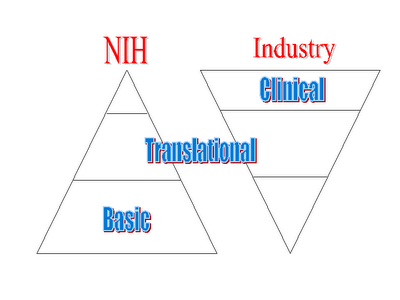Biting the hand that feeds
Fear the socialist healthcare:
As another example, [Lilly CEO Sidney Taurel] offers the anti-drug-industry crusade of Sen. Estes Kefauver in the late 1950s and early '60s:In the 1950s, when the "better living through chemicals" era was in full swing, large corporations produced chemicals. Molecular biology was more of a dream than a reality until the 80s when research in that area was greatly expanded across the board (both by the NIH and by industry). Comparing research in the 50s to research in the 90s and making a connection to a vague "threat" by government is tenuous at best, and it actually sounds kind of silly to me. More Taurel:
"At that point companies started to diversify. We bought Elizabeth Arden, we went into animal health and agricultural chemical products, later on in medical instruments and so forth. All other companies did similar things. And for a while after that we saw fewer new products. When this threat subsided the companies focused again on R&D and we saw a golden era in the '80s and '90s with a lot of new products and breakthroughs."
"I've seen the bad effects that government policies of price controls and overregulation can have," Mr. Taurel tells me. "When you look at Europe 30 years ago, that was where most of the innovation in pharmaceuticals used to take place. When I joined the industry, the No. 1 was Roche, and then it was Hoechst and Bayer and all these companies, which today are not as big. What 30 years of price controls have done is more and more of the research has come here. I think only about 25% of the total research in the whole industry is done in Europe."Price controls had maybe a slight role to play in European pharmaceutical companies' research lab relocations to the US. There are many other reasons. For instance, the draconian regulatory hurdles on animal and human research in Europe compared to the US. And also, 30 years ago there was no EU so there were fragmented regulatory drug-approval processes and relatively smaller markets than the homogeneous US with its FDA. Plus, the NIH even then simply had more flow than individual European countries' research agencies, thereby providing more of a basic research base for industrial development. The article then touches on profits and expenditures, and comes to the following point:
I ask if we could expect many such innovations if we tried to take out the profit motive and alleged redundancies and make all drug research a government endeavor. Mr. Taurel concedes the government can play a role in funding basic science. "But to assume that the whole R&D apparatus can be in the hands of the government is a total fallacy," he says. "Governments are not good at making risky bets and mustering all of the different disciplines and technology that we need to bring a product to the market."Geez! I doubt anyone is seriously talking about entirely taking profit motives out of the picture. Painting the 'evil Hillary is like Stalin' picture of politicians killing profits is just plain fearmongering. And what about "Governments are not good at making risky bets?" For the sake of argument let's consider the NIH budget and industry research budgets to be roughly equal (give or take a few billion). Below is my diagram depicting how funding of the total research endeavor in the US is roughly allocated:

While the NIH ("government") performs the majority of basic research, industry picks up on those advances and brings them to clinical use by allocating more funding towards clinical research.
What, exactly, is it about basic research that is not high risk? Not to pick on drosophila, but the fact that we know what each cell does in the fly allows us to use it as a model system to test hypotheses, the findings of which can then be applied to other models systems which can eventually be applied to humans. It's the fact that every little cog helps the next team build on that information and eventually helps industry produce viable drugs that allows the industry to thrive here in the US. Though health care reform would likely have some sort of an impact on research funding, it's likely to be minor considering other factors that go into the endeavor as a whole.


<< Home